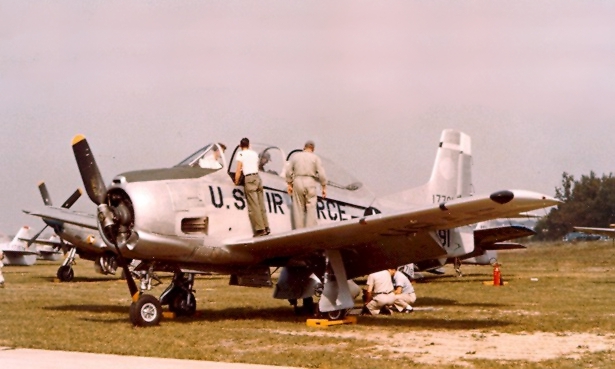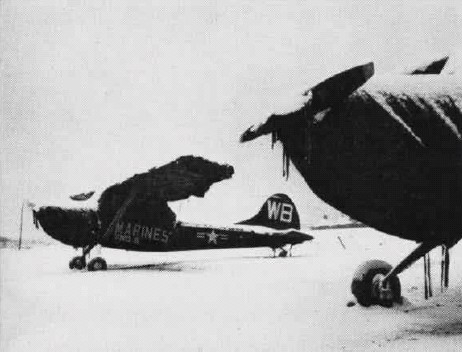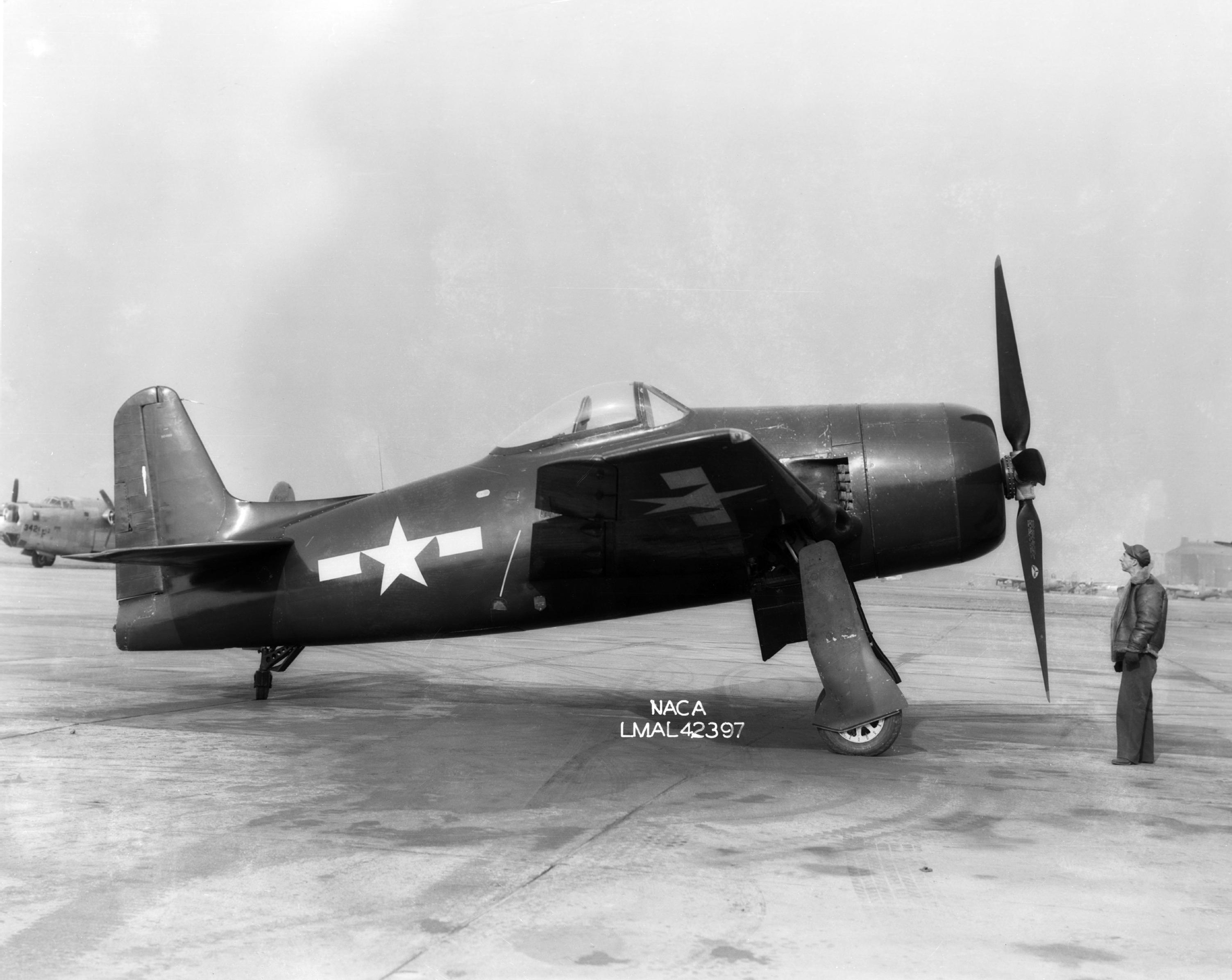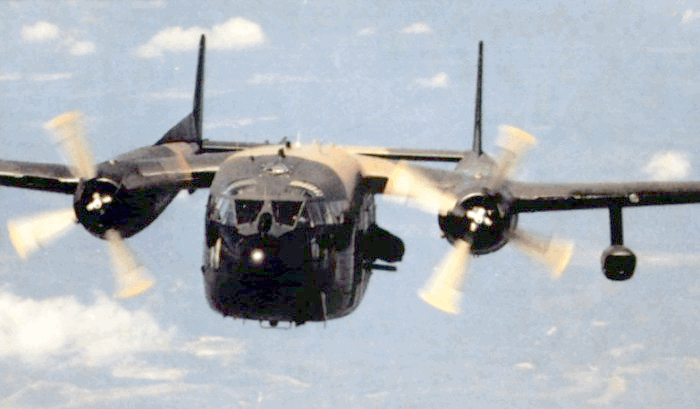|
VNAF
The South Vietnam Air Force, officially the Republic of Vietnam Air Force (RVNAF; vi, Không lực Việt Nam Cộng hòa, KLVNCH; french: Force aérienne vietnamienne, FAVN) (sometimes referred to as the Vietnam Air Force or VNAF) was the aerial branch of the Republic of Vietnam Military Forces, the official military of the Republic of Vietnam (South Vietnam) from 1955 to 1975. The RVNAF began with a few hand-picked men chosen to fly alongside French pilots during the State of Vietnam era. It eventually grew into the world's fourth largest air force at the height of its power, in 1974, just behind the Soviet Union, the USA, and the People's Republic of China. Other sources state that VNAF was the sixth largest air force in the world, just behind the Soviet Union, the USA, China, France and West Germany. It is an often neglected chapter of the history of the Vietnam War as they operated in the shadow of the United States Air Force (USAF). It was dissolved in 1975 after the Fall ... [...More Info...] [...Related Items...] OR: [Wikipedia] [Google] [Baidu] |
Tan Son Nhut Air Base
Tan Son Nhut Air Base ( vi, Căn cứ không quân Tân Sơn Nhứt) (1955–1975) was a Republic of Vietnam Air Force (RVNAF) facility. It was located near the city of Saigon in southern Vietnam. The United States used it as a major base during the Vietnam War (1959–1975), stationing United States Army, Army, United States Air Force, Air Force, United States Navy, Navy, and United States Marines, Marine units there. Following the Fall of Saigon, it was taken over as a Vietnam People's Air Force (VPAF) facility and remains in use today. Tan Son Nhat International Airport, (IATA: SGN, ICAO: VVTS) has been a major Vietnamese civil airport since the 1920s. Early history Tan Son Nhat Airport was built by the French in the 1930s when the French Colonial government of Indochina constructed a small unpaved airport, known as Tan Son Nhat Airfield, in the village of Tan Son Nhat to serve as Saigon's commercial airport. Flights to and from France, as well as within Southeast Asia were ... [...More Info...] [...Related Items...] OR: [Wikipedia] [Google] [Baidu] |
A-1 Skyraider
The Douglas A-1 Skyraider (formerly known as the AD Skyraider) is an American single-seat attack aircraft in service from 1946 to the early 1980s. The Skyraider had an unusually long career, remaining in front-line service well into the Jet Age (when most piston-engine attack or fighter aircraft were replaced by Jet aircraft); thus becoming known by some as an "anachronism". The aircraft was nicknamed "Spad", after the French World War I fighter. It was operated by the United States Navy (USN), the United States Marine Corps (USMC), and the United States Air Force (USAF), and also saw service with the British Royal Navy, the French Air Force, the Republic of Vietnam Air Force (RVNAF), and others. It remained in U.S. service until the early 1970s. The jet powered A-10 Thunderbolt II was based on specifications for a modernized Skyraider with a heavy payload and good endurance. Design and development The piston-engined, propeller-driven Skyraider was designed during World War I ... [...More Info...] [...Related Items...] OR: [Wikipedia] [Google] [Baidu] |
Northrop F-5
The Northrop F-5 is a family of supersonic light fighter aircraft initially designed as a privately funded project in the late 1950s by Northrop Corporation. There are two main models, the original F-5A and F-5B Freedom Fighter variants and the extensively updated F-5E and F-5F Tiger II variants. The design team wrapped a small, highly aerodynamic fighter around two compact and high-thrust General Electric J85 engines, focusing on performance and a low cost of maintenance. Smaller and simpler than contemporaries such as the McDonnell Douglas F-4 Phantom II, the F-5 cost less to procure and operate, making it a popular export aircraft. Though primarily designed for a day air superiority role, the aircraft is also a capable ground-attack platform. The F-5A entered service in the early 1960s. During the Cold War, over 800 were produced through 1972 for U.S. allies. Though at the time the United States Air Force (USAF) did not have a need for a light fighter, it did procure approx ... [...More Info...] [...Related Items...] OR: [Wikipedia] [Google] [Baidu] |
Trần Văn Minh (aviator)
Trần Văn Minh (21 July 1932 – 27 August 1997) was a general of the Republic of Vietnam Air Force (RVNAF). Career In 1956 Minh was promoted to captain. In 1958 he received jet-training on the Cessna T-37 Tweet, Cessna T-37 and was promoted to major. In 1960 he attended the Air University (United States Air Force), Air Command and Staff School at Maxwell Air Force Base, Montgomery, Alabama, United States. On his return to South Vietnam he served as deputy base commander of Nha Trang Air Base, then deputy commander Bien Hoa Air Base, then Command Assistant Deputy at Danang Air Base. In 1964 he was appointed commander of the 62nd Tactical Wing at Pleiku Air Base. In November 1967 Minh was promoted to Brigadier general, brigadier-general and commander of the RVNAF, succeeding Nguyễn Cao Kỳ who was elected as Vice-President of the Republic of Vietnam. Minh would be the longest-serving commander of the RVNAF holding command from 1967 until the Fall of Saigon in April 1975. In 19 ... [...More Info...] [...Related Items...] OR: [Wikipedia] [Google] [Baidu] |
T-28 Trojan
The North American Aviation T-28 Trojan is a radial-engine military trainer aircraft manufactured by North American Aviation and used by the United States Air Force and United States Navy beginning in the 1950s. Besides its use as a trainer, the T-28 was successfully employed as a counter-insurgency aircraft, primarily during the Vietnam War. It has continued in civilian use as an aerobatics and warbird performer. Design and development On September 24, 1949, the XT-28 (company designation NA-159) was flown for the first time, designed to replace the T-6 Texan. The T-28A arrived at the Air Proving Ground, Eglin Air Force Base, Florida, in mid-June 1950, for suitability tests as an advanced trainer by the 3200th Fighter Test Squadron, with consideration given to its transition, instrument, and gunnery capabilities. Found satisfactory, a contract was issued and between 1950 and 1957, a total of 1,948 were built. Following the T-28's withdrawal from U.S. military service, a numb ... [...More Info...] [...Related Items...] OR: [Wikipedia] [Google] [Baidu] |
B-57 Canberra
The Martin B-57 Canberra is an American-built, twin-engined tactical bomber and reconnaissance aircraft that entered service with the United States Air Force (USAF) in 1953. The B-57 is a license-built version of the British English Electric Canberra, manufactured by the Glenn L. Martin Company. Initial Martin-built models were virtually identical to their British-built twinjet counterparts; Martin later modified the design to incorporate larger quantities of US-sourced components and produced the aircraft in several different variants. The B-57 Canberra holds the distinction of being the first jet bomber in U.S. service to drop bombs during combat. The Canberra was used extensively during the Vietnam War in a bombing capacity; dedicated versions of the type were also produced and served as high-altitude aerial reconnaissance platforms (the Martin RB-57D Canberra), and as electronic warfare aircraft. The B-57 Canberra was also sold to export customers abroad; further combat us ... [...More Info...] [...Related Items...] OR: [Wikipedia] [Google] [Baidu] |
A-37 Dragonfly
The Cessna A-37 Dragonfly, or Super Tweet, is an American light attack aircraft developed from the T-37 Tweet basic trainer in the 1960s and 1970s by Cessna Cessna () is an American brand of general aviation aircraft owned by Textron Aviation since 2014, headquartered in Wichita, Kansas. Originally, it was a brand of the Cessna Aircraft Company, an American general aviation aircraft manufacturing c ... of Wichita, Kansas. The A-37 was introduced during the Vietnam War and remained in peacetime service afterward. Design and development The growing American military involvement in Vietnam War, Vietnam in the early 1960s led to strong interest in Counter-insurgency aircraft, counter-insurgency (COIN) aircraft. In late 1962, the United States Air Force, U.S. Air Force's Special Air Warfare Center at Eglin Air Force Base's Hurlburt Field in Florida evaluated two T-37Cs for the role. The Air Force found the T-37 promising, but wanted an improved version of the aircraft that cou ... [...More Info...] [...Related Items...] OR: [Wikipedia] [Google] [Baidu] |
O-1 Bird Dog
The Cessna L-19/O-1 Bird Dog is a liaison and observation aircraft. It was the first all-metal fixed-wing aircraft ordered for and by the United States Army following the Army Air Forces' separation from it in 1947. The Bird Dog had a lengthy career in the U.S. military, as well as in other countries. Design and development The U.S. Army was searching for an aircraft that could adjust artillery fire, as well as perform liaison duties, and preferably be constructed of all metal, as the fabric-covered liaison aircraft used during World War II (primarily Stinson and Piper products) had short service lives. After the specification for a two-seat liaison and observation monoplane was issued the Cessna Aircraft Company submitted the Cessna Model 305A, a development of the Cessna 170. The Cessna 305A was a single-engine, lightweight, strut-braced, high-wing monoplane with a tailwheel landing gear. The greatest difference from the Cessna 170 was that the 305A had only two seats, in ... [...More Info...] [...Related Items...] OR: [Wikipedia] [Google] [Baidu] |
Republic Of Vietnam Military Forces
The Republic of Vietnam Military Forces (RVNMF; – QLVNCH), were the official armed defense forces of the defunct Republic of Vietnam and was responsible for the defense of the state since its independence from France in October 1955 to its demise in April 1975. Branches The QLVNCH was formally established on December 30, 1955, by the strongman and republican first South Vietnamese president Ngo Dinh Diem, which he declared on October 26 that year after winning a rigged referendumRottman and Bujeiro, ''Army of the Republic of Vietnam 1955-75'' (2010), p. 7. on the future of the State of Vietnam. Created out from ex-French Union Army colonial Indochinese auxiliary units (French: ''Supplétifs''), gathered earlier in July 1951 into the French-led Vietnamese National Army (VNA) (Vietnamese: ''Quân Đội Quốc Gia Việt Nam'' – QĐQGVN), Armée Nationale Vietnamiènne (ANV) in French, the armed forces of the new state consisted in the mid-1950s of ground, air, and naval bra ... [...More Info...] [...Related Items...] OR: [Wikipedia] [Google] [Baidu] |
Laotian Civil War
The Laotian Civil War (1959–1975) was a civil war in Laos which was waged between the Communist Pathet Lao and the Royal Lao Government from 23 May 1959 to 2 December 1975. It is associated with the Cambodian Civil War and the Vietnam War, with both sides receiving heavy external support in a proxy war between the global Cold War superpowers. It is called the Secret War among the American CIA Special Activities Center, and Hmong and Mien veterans of the conflict. The Kingdom of Laos was a covert theater for other belligerents during the Vietnam War. The Franco–Lao Treaty of Amity and Association (signed 22 October 1953) transferred remaining French powers to the Royal Lao Government (except control of military affairs), establishing Laos as an independent member of the French Union. However, this government did not include representatives from the Lao Issara anti-colonial armed nationalist movement. The following years were marked by a rivalry between the neutralists ... [...More Info...] [...Related Items...] OR: [Wikipedia] [Google] [Baidu] |
F8F Bearcat
The Grumman F8F Bearcat is an American single-engine carrier-based fighter aircraft introduced in late World War II. It served during the mid-20th century in the United States Navy, the United States Marine Corps, and the air forces of other nations. It was Grumman Aircraft's last piston engined fighter aircraft. Modified versions of the Bearcat have broken speed records for piston-engined aircraft. Today, the Bearcat is popular among warbird owners and air racers. Design and development Concept The Bearcat concept began during a meeting between Battle of Midway veteran F4F Wildcat pilots and Grumman Vice President Jake Swirbul at Pearl Harbor on 23 June 1942. At the meeting, Lieutenant Commander Jimmie Thach emphasized one of the most important requirements in a good fighter plane was "climb rate". Climb performance is strongly related to the power-to-weight ratio, and is maximized by wrapping the smallest and lightest possible airframe around the most powerful available e ... [...More Info...] [...Related Items...] OR: [Wikipedia] [Google] [Baidu] |
Fairchild AC-119
The Fairchild AC-119G Shadow and AC-119K Stinger were twin-engine piston-powered gunships developed by the United States during the Vietnam War. They replaced the Douglas AC-47 Spooky and operated alongside the early versions of the AC-130 Spectre gunship. Design and development By late 1967, the idea of the fixed-wing gunship had been proven so successful, the United States Air Force was having a difficult time keeping up with demand. The newer AC-130s that had been created under Project Gunship II were effective, but were being mostly used for armed reconnaissance and interdiction of the Ho Chi Minh Trail. Furthermore, the C-130 airframe was in active service as a transport, vital to the war effort in Southeast Asia. The Air Force desperately needed a new gunship to replace the vulnerable and underpowered AC-47 in the close air support role, as well as supplementing the AC-130 in attacking targets on the Ho Chi Minh Trail. The Fairchild C-119 Flying Boxcar presented an o ... [...More Info...] [...Related Items...] OR: [Wikipedia] [Google] [Baidu] |









